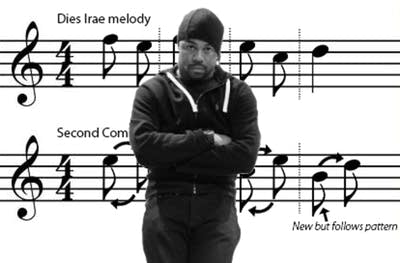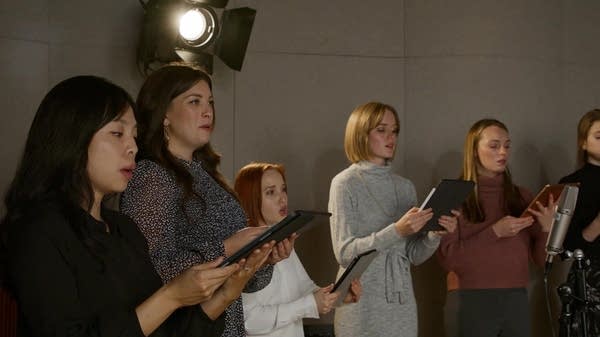
As a classical fan, I'll admit I can be a little defensive when I hear a pop artist use a classical piece in a song. There was a time when I was convinced that there was something just plain wrong when Vittorio Monti's Czardas showed up in the opening to Lady Gaga's "Alejandro."
Lady Gaga was far from the first to draw on classical music for pop purposes, and she certainly won't be the last. The question we ask ourselves shouldn't be whether doing so somehow demeans classical music or is merely a novelty — I'm sure many classical defenders once said similar things about Duke Ellington's treatment of Edvard Grieg's Peer Gynt Suite. Rather, the question we should ask is whether the result of a classical crossover is any good.
We should expect musicians to continue combining genres and styles in increasingly inventive and fascinating ways, often blurring the lines between "high" and "low" art. The best examples will be the musicians who understand the musical puzzle pieces they combine to create something clever. Take this song that mixed rap with Gregorian chant, all in the name of selling shoes during the NBA playoffs several years back.
The song is "The Second Coming" by Just Blaze and Juelz Santana, and what makes it extraordinary is not just the unusual pairing of classical and hip hop but the thought process that shows a clear understanding of the musical source.
The beat for "The Second Coming" is a reworked version of the Dies Irae melody. The Dies Irae was a section of the Catholic requiem mass, which translates to "Day of Wrath" in reference to the Christian belief in the end of days and rapture. Composers took the Latin text from mass sections such as the Kyrie eleison, Gloria or Agnus Dei and set it to their own music to be used in services or as standalone pieces.
However, the Dies Irae is something of a special case. While composers like Mozart or Verdi set the text to their own music in their respective requiems, a medieval plainchant melody written by an unknown author is wider known than the versions by either of those master composers.
This melody became something of a symbol for composers to invoke images of death or the afterlife. Like any frequently used symbol, a good composer tries to play with the theme and transform it, even obscure it — much in the same way an artist won't simply paint a large dove on a canvas and say, "It means peace. You get it?"
The Dies Irae melody shows up in dozens of classical compositions, ranging from Hector Berlioz's straightforward use in Symphonie Fantastique to Franz List's sweeter version in Rhapsody on a Theme of Paganini to a menacing Broadway quotation in Stephen Sondheim's Sweeney Todd or a humorous use in Michael Daugherty's Dead Elvis. All of which brings us back to a hip-hop song commissioned for a shoe commercial.
The full song starts with a Dies Irae quotation that is cut off in the 30-second spot; the theme is reworked into the beat that runs throughout the song.
This small tweak actually helps move the emphasis from the on-beat to the offbeat — something that is pretty important when dealing with hip-hop. But what's extraordinary about this song isn't just that it incorporated a long-standing classical melody, the name "The Second Coming" shows that there was intention and understanding of the source material.
In the same way the beat reworks the Dies Irae into a beat, Just Blaze and Juelz Santana rethink the rapturous meaning of "day of wrath" to serve their goal. Instead of "The Second Coming" referring to the end of days and return of Christ, this second coming is expressed as "a new beginning" for athletes, potential shoe-buyers and listeners in general to "get up [and] try again." Just Blaze and Santana pay homage to the classical music they use, and they transform it to create something clever and inventive.
More and more, all music is on the table for new musicians and composers looking to create or assemble something new. The lines between genres and so-called high or low art will become increasingly blurry as each appropriates ideas from the other. For classical fans, this means we might hear "our" music in places we didn't expect. But rather than getting defensive we should be intrigued because in some cases the result is truly wonderful — though I'm still not sure how I feel about Lady Gaga's "Alejandro."
Ricky O'Bannon is a freelance music journalist living in Los Angeles.
Interested in writing about classical music for Classical MPR? Have a story about classical music to share? We want to hear from you!
Love the music?
Show your support by making a gift to YourClassical.
Each day, we’re here for you with thoughtful streams that set the tone for your day – not to mention the stories and programs that inspire you to new discovery and help you explore the music you love.
YourClassical is available for free, because we are listener-supported public media. Take a moment to make your gift today.











